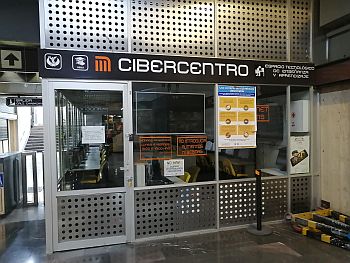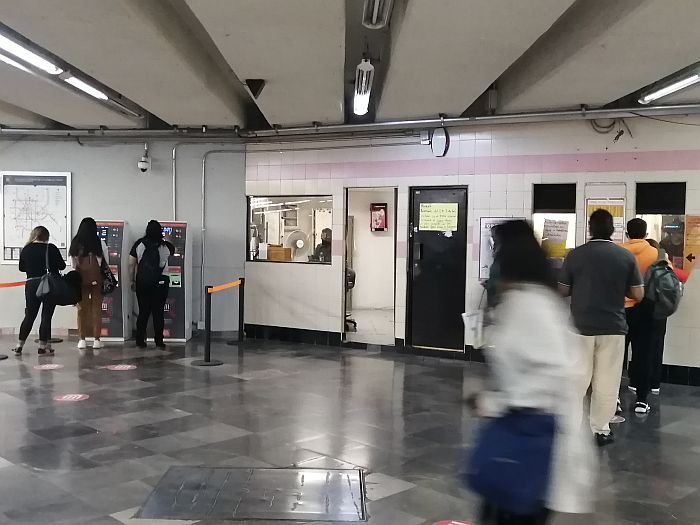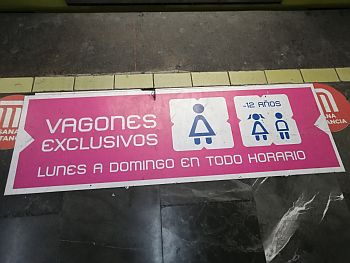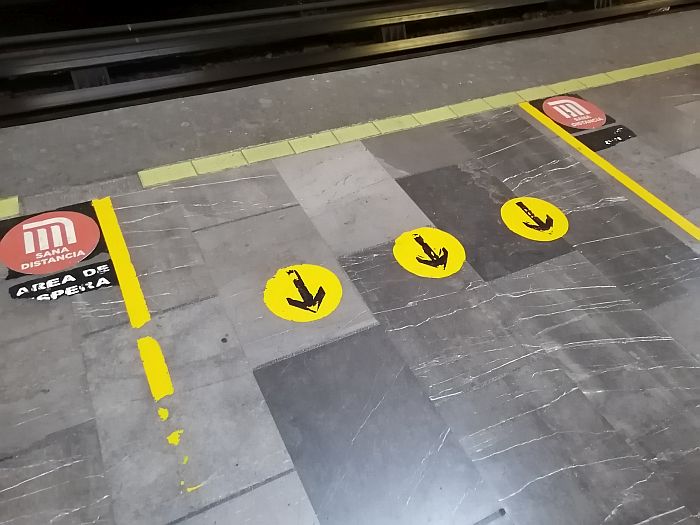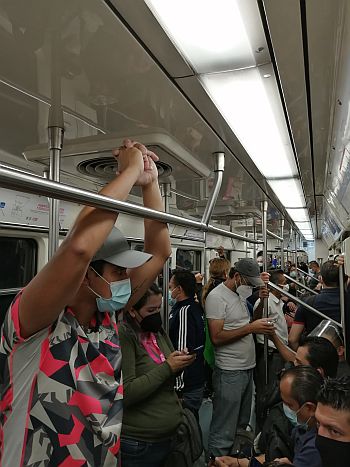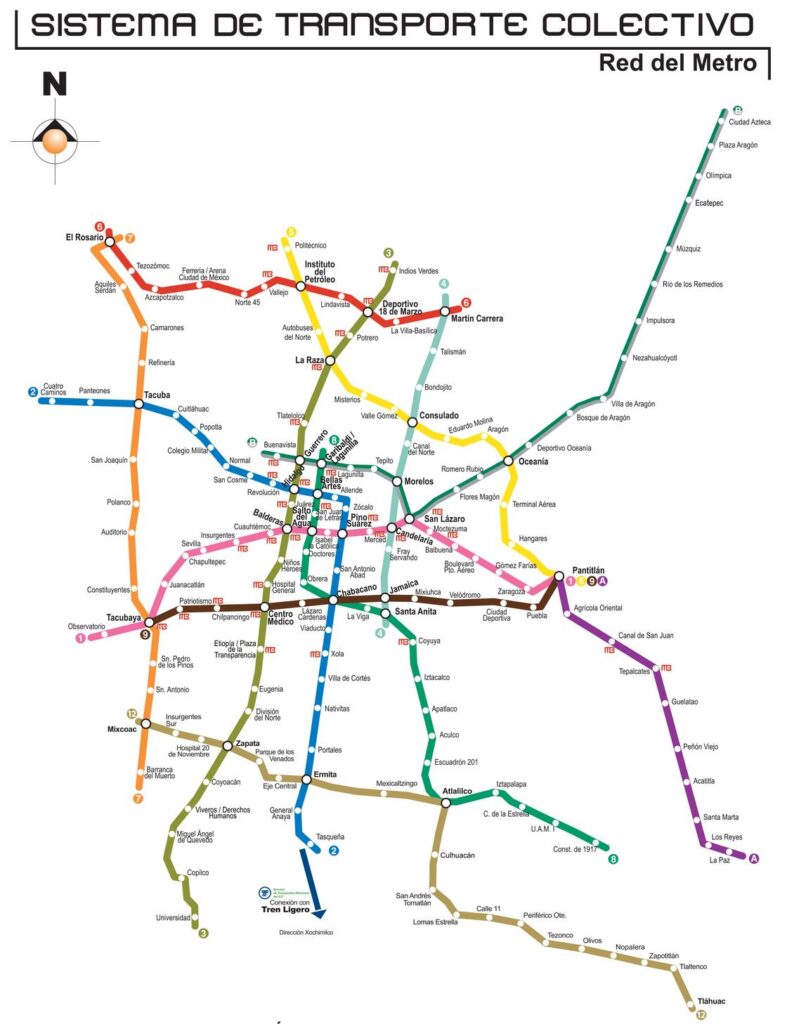
 After almost a decade in Mexico City I feel like quite the insider when it comes to public transportation so I thought I would break down the main ways to get around the city (not including cabs or ride-share) so the moment you arrive you are ready to use public transportation.
After almost a decade in Mexico City I feel like quite the insider when it comes to public transportation so I thought I would break down the main ways to get around the city (not including cabs or ride-share) so the moment you arrive you are ready to use public transportation.
Skip to Mexico City Metrobus & Regular Buses
Mexico City Metro
The Mexico City metro is for me one of the most fascinating subworlds in the city. You could spend most of your day down in the metro and get all your needs met (although as of yet there are no hotels). Bookstores, internet cafes, food stalls, bathrooms, art installations — our metro has it all.
Many people (including lots of middle and upper-class Mexicans) have a pretty drab view of the Mexico City metro and the city’s public transportation in general. Despite the millions that ride this metro every day and the extensive breadth of its lines (this is one of the most used metros on the globe), it functions surprisingly well, efficiently, and while not sparkling, is much cleaner than plenty of metros I have been in around the world.
There is also the question of pickpocketers which tourists are NOTORIOUSLY warned against as if the metro is a complete den of thieves and I think it’s a bit overdone, but we are going to talk about that later. Let’s start with a few basics you need to know to ride the Mexico City metro.
Buying a ticket/card, finding your way
The local government has finally done away with individual tickets for the metro. Now, everyone must use the multimodal transportation card that money can be added to by using one of the machines in a Metro or a Metrobus stations. Now you have to buy a card and can go to the ticket booth to add more credit, but last I checked there were not card vending machines at every metro station, but I am sure there will be total coverage soon.
While the police on duty in most stations are happy to tell you where you can add money to your card, the best thing to do is find a Metrobus station nearby (they usually coincide with metro stops, sometimes even with the same name) because ALL Metrobus stations have card machines where you can add credit.
Once you have your card with credit make sure to take a look at the metro map BEFORE you go through the turnstile, as often there is no map on the other side or the map is hard to find. I find looking at the printed map on the wall better than using an app or looking at Google Maps. If you know which station you need to go to you can easily see where you need to change lines and which direction you need to be headed by looking at the map, but do it your way.
All the lines in Mexico City have their own color and each station has a picture that represents it (Thank Lance Wyman for that). This can make it easier for non-Spanish speakers because lines built later in the system’s history start getting more complicated with indigenous names that you might not be able to pronounce, but you can say “the stop with the duck” or whatever.
Once through the turnstiles you want to follow the signs for the Andenes (platforms) in the direction (so if I am going towards Pantitlán I look for an andenes sign that says dirección Pantitlan) you are going, they are usually each on one side of a hallway, but it can get tricky so always double-check that you are going in the right direction. Some stations have a single entrance and exit and to get to the platforms going the opposite direction you either walk a passage underground or one that passes over the tracks at one end.

Metro Etiquette
There’s not much. The metro in Mexico City seems to be for many an extension of their living or bathroom. Women putting on their make-up, doing their hair, people eating anything and everything, but it is generally not a raucous-y conversation kind of place. Most people on the metro ride in silence. EVERYONE eats on the metro (which I find disgusting) and EVERYONE makes out on the metro (which I find charming).
General peak hours are from about 6 to 9 in the morning and 6 to 9 in the evening, but there is spillover for sure on both ends. During peak hours you will have to wait in a line (sometimes more like a herd where you slowly merge to the front) to get on a car and people will shove you until they fit into the tiniest crack available. For tourists who can choose when they travel, I would suggest skipping these hours. This is also the time you are most likely to get pickpocketed or for women, rubbed up against. Avoid the second by using the women-only cars that are available at the end of most trains. You will generally see barriers that cordon them off so you can tell which cars are which.
The other thing is that people actually follow those arrows of where you wait for the cars to open and where people exit (they are painted on the floor at the edge of the platform), so you should too.
Danger on the Metro
So here’s the thing. If you have EVER ridden ANY metro in ANY city in the world you know you have to keep your eyes open and have control of your stuff. Mexico City is no different. Like I said above, peak hours make pickpocketing a little easier for people but you should ALWAYS be vigilant, especially of people pushing and shoving when it seems completely unnecessary (they are probably stealing stuff).
I want to go on record as saying that I have been riding the metro here for the past 16 years and twice I have had men rub themselves against me and never have I had anything stolen from me. But I ride like a local, not like an oblivious tourist — which you don’t want to be anyway right?!
The other danger worth mentioning is getting lost. The metro can turn you around. Especially if you have arranged “to meet” someone either at the metro or outside the metro. Most stops have at least 4 exits and many have more if more than one line crosses through them. Always have some other indicators for meeting up than just “the Pino Suarez metro.” In fact, I would say after all my years here, never say you are going to meet at a metro, just find a monument or something nearby and meet there, it’s not worth the hassle.
Friends also recently reminded me to add that it shouldn’t make you nervous to see police at every station (at the entrances and on the platforms). It doesn’t mean a crime was just committed, there are police all over Mexico City, it’s a pretty normal sight. In fact, if a crime was committed, I’m not sure they would be that much help, just sayin. BUT they are great if you get lost and happy to help.
The Joys of the Metro
Ok, here’s my favorite part. I told you that I love the metro and some of my favorite things — like roving vendors — are starting to go extinct but there is still plenty to love. The bookstore passage between the Pino Suarez and Zocalo metros. The tiny pyramid in Pino Saurez. The ladies’ fashion shops in Chapultepec. I love each and every one of these places in a serious way.
All the food in the metro is terrible, but if you are desperate for a quick pick-me-up you can always get a slice of pizza in Centro Medico, a Mcdonald’s ice cream in Tasqueña, or some of the various health bars from the Naturista places that are everywhere. The taco suaderos in Tacubaya? I don’t know man, but I will try anything once. There are donut sellers (not good) and water sellers (a lifesaver) and newspaper sellers (super popular). And all those people are laced among the hospital staff, students, construction workers, and traveling families that pack the metro every day.
This is a world you will want to see and if you are still nervous about it you can come along with me on my Mexico City 101 tour where we ride the metro (and Metrobus), see some of my favorite transportation attractions, learn street food etiquette, talk taxis, and tips, and do a bunch of other things to get you ready for your time in Mexico City.
**Make sure you take a look at the vocab section at the end of the next post: Mexico City Metrobus and Regular Buses explained.
Ready for more?
Mexico City Metrobus & Regular Buses
Click here to subscribe via RSS

